Versace, Ermenegildo Zegna review SS19: Blockbusters of Milan menswear
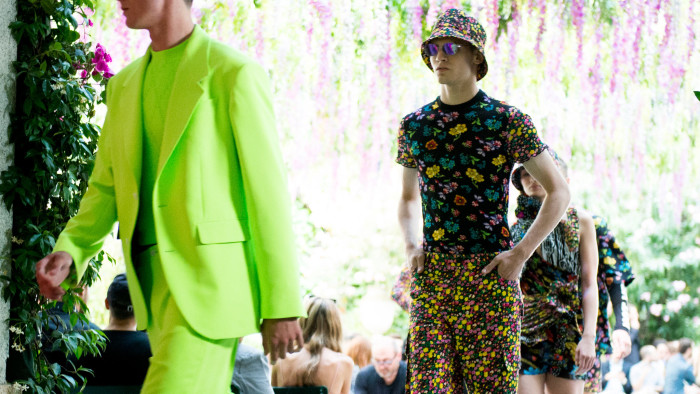
Simply sign up to the Life & Arts myFT Digest -- delivered directly to your inbox.
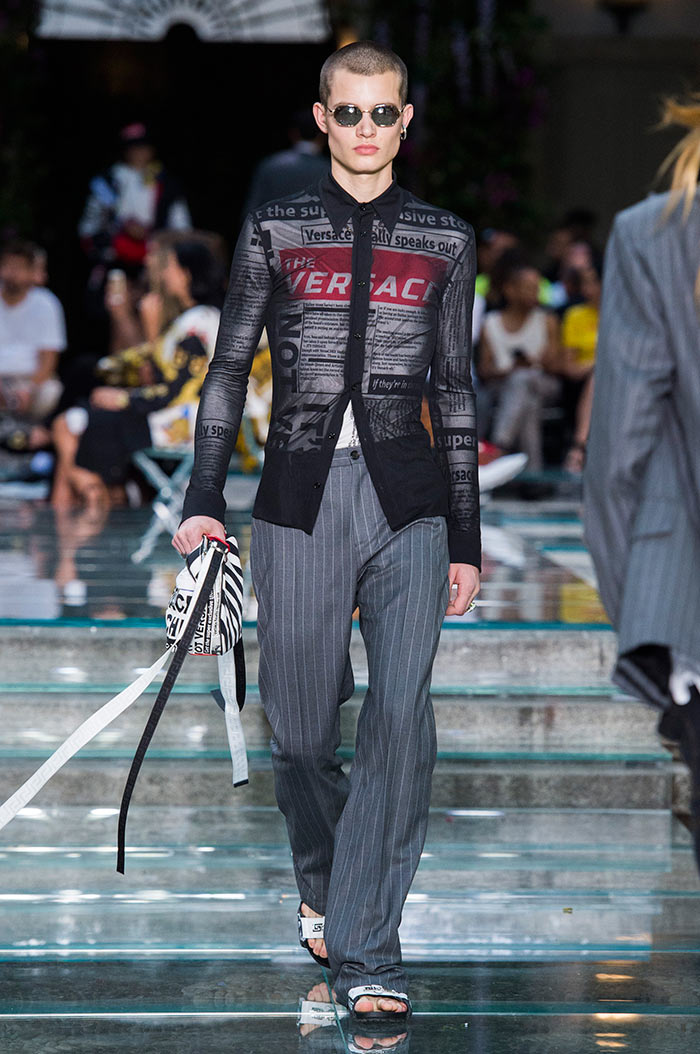
“It was so energetic and full of life,” said Donatella Versace, after her blockbuster spring/summer 19 menswear show in Milan. “I’m so happy I want to do it all over again.”
It was a blockbuster because Versace pulled out the stops, staging the sort of fashion-show-as-event rarely seen in menswear. Mostly this was done with a few choice female supermodels: Kendall Jenner, Bella Hadid as well as fashion’s new favourite, Adut Akech. But the menswear held its own too.
On the catwalk was further evidence that the look of the season is coagulating pretty quickly: casualwear, vivid colour, sneakers. Opening look was a pinstripe blazer, but it was oversize, like a kid trying on a grown-up’s. It was worn with baggy faded jeans. Slim-fit acid floral shirts were like a grunge-era thrift store find, worn with a ravers bucket hat. Where there was a sharply tailored suit, it was entirely in acid pink.
New was a tabloid print imagining a newspaper called The Versace, its lead story on that crucial topic: how do you pronounce the brand’s name? “The resulting sound is far more luxurious than a screeching “iiiii” noise,” reads one printed sweatshirt, this particular text sitting across the upper ribcage. Newspaper prints are nothing new: see Galliano’s old packaging. But it’s the sort of idea that connects at a commercial level.
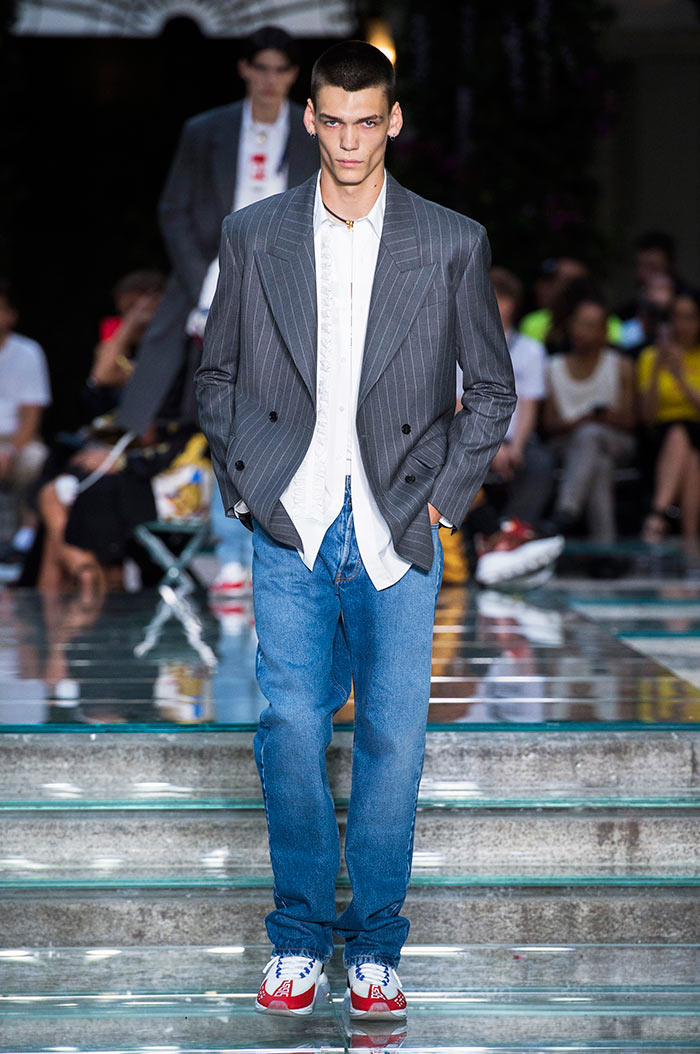
A couple of days before the show, Versace chief executive Jonathan Akeroyd spoke of his plans to become a €1bn brand. For signs of that ambition, look to the floor. Versace is the first luxury house that, to my knowledge, has its own dedicated sneaker designer: Salehe Bambury, previously a designer for Kanye West’s Yeezy.
His first work at Versace was the Chain Reaction sneaker, which has an exaggerated sole that looks like a bike tyre that had been pumped one too many times. Here on the catwalk was a less inflated version with more of an athletic design and therefore wearable. When fashion people talk about footwear right now, what they mean is sneakers: in Harrods, sneakers make up for 55 per cent of all men’s footwear sold. For Versace to take sneakers seriously means it takes its future seriously.
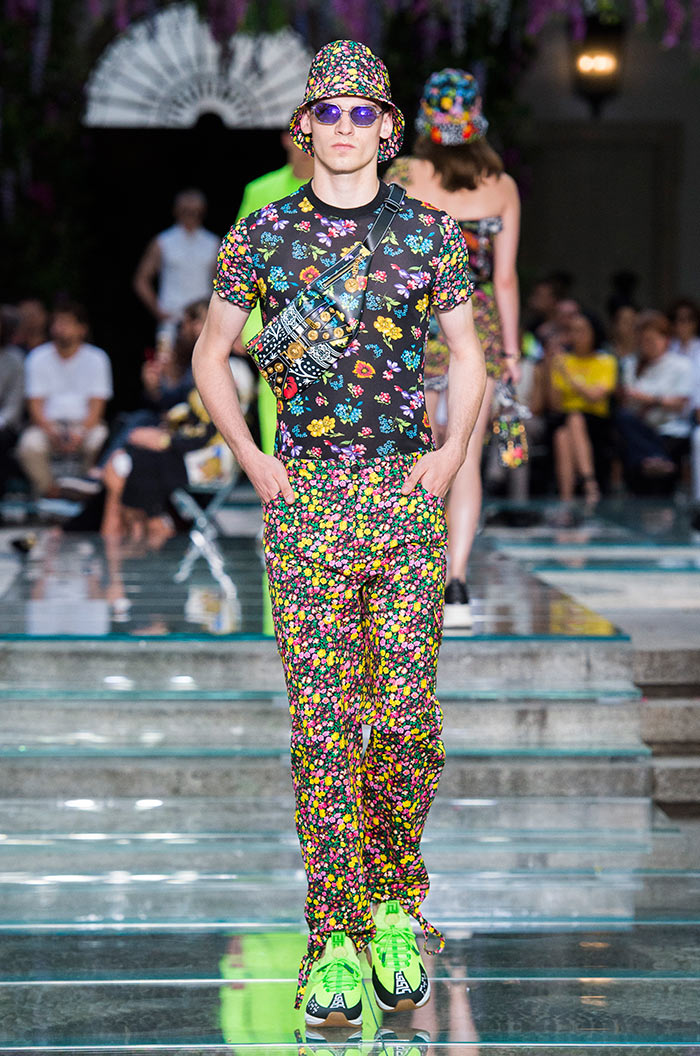
The evening before, Ermenegildo Zegna staged a blockbuster of a more cerebral kind. It was held outside the Palazzo Mondadori, an Oscar Niemeyer design. “This is one of the most powerful buildings of the 20th century, and one of the least visited,” said Alessandro Satori, artistic director of Ermenegildo Zegna, a few hours before the show. Mondadori is an Italian publisher, with a business in books and magazines such as Grazia. The building is stunning: soaring irregular shaped arches in a long rectangular block, sitting over a vast lake of water. It’s private land. If you’re not on staff, or an editor or buyer invited to the Zegna show, there’s no entry.
“The building was commissioned in 1968,” said Sartori, “which is exactly when Zegna started pret-a-porter”. There had never been a fashion show there. It was something of a coup. Sartori chose to show in the setting what he called “activewear”. Correct: menswear’s big question right now is finding the right name for bombers/trackpants/sneakers etc.
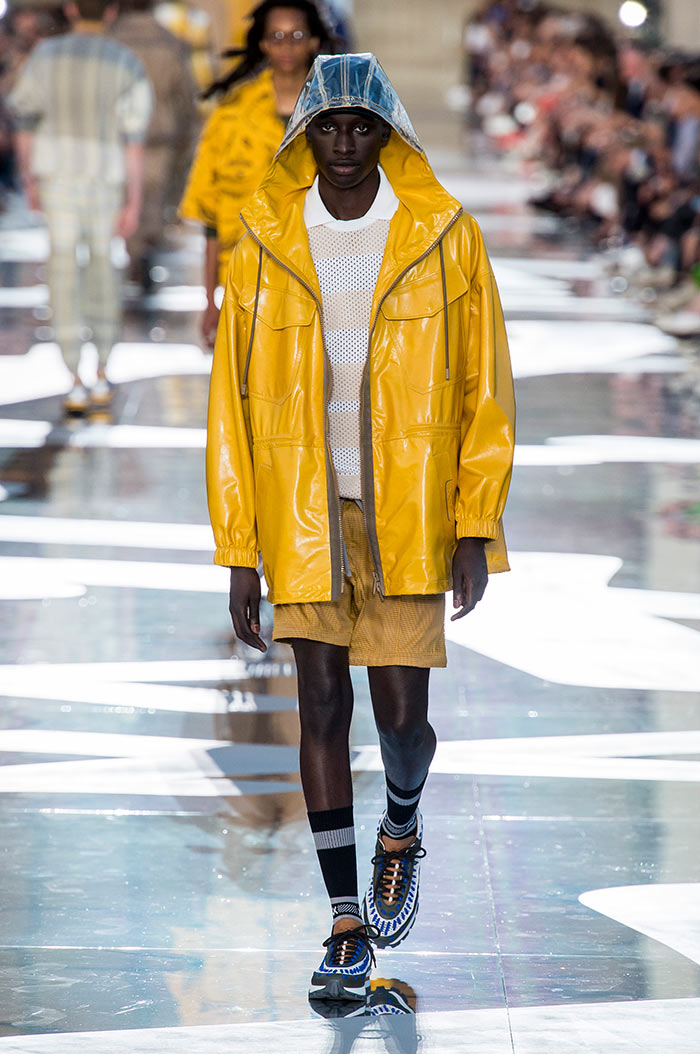
Whatever it’s called, it’s the look that is dominating menswear. It’s something that Sartori has been moving towards for a while, both at Zegna and his previous position at Berluti. It appears to be working: last year Zegna recorded a 64 per cent jump in net profits. Here, the collection looked great on the rail in front of us at the afternoon preview: bombers, parkas, hybrid tailored jackets, some of them cut as if shirts. Colours went from earth through pinks, blues, yellows.
Yet on the runway it felt artificial. The models were young, the colours jarred, and with the styling there was too much going on. Slouchy pants had cargo pockets; horizontal bands of rugby shirts were in mesh; the hood of an otherwise yellow rain mac was see-through.
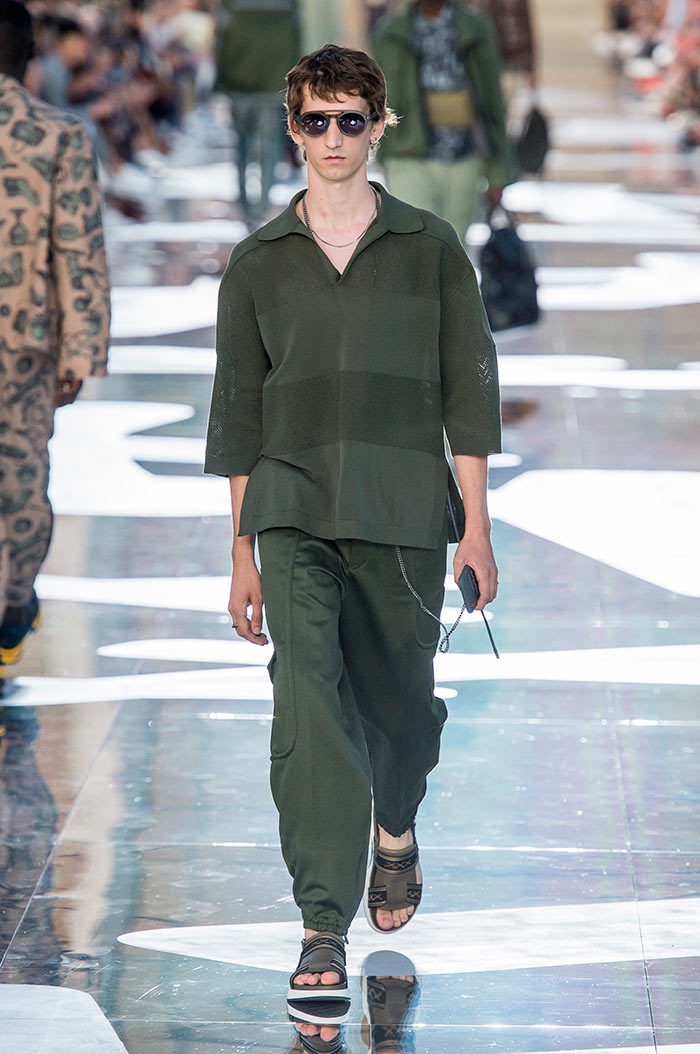
Some of the models carried Zegna shop packaging rendered in leather: please, leave that trick to Balenciaga. One model wore the following pieces: a large-rimmed visor; a pink ribbed knit tank; pink drawstring mesh shorts; baby blue ankle socks; thick-soled sneakers. In his hand was a bag. Why can’t sportswear be serene?
At the end of the show, Sartori took his bow in a bomber and trackpants from the collection rendered in black. He looked so good! The roomy pants he wore were real winners: cut with no seams at the side, with two strong pleats at the front to create shape. It was those same slouchy pants, but in a dark tone they really looked best on him. How great the collection could have been shown on men who’d lived a little, the styling calmed down, the colours clarified. But then, how many customers of Zegna actually look at catwalk shows? Hopefully this is just an example of the age-old currents that run under fashion shows: present work of novelty on the catwalk, but when it gets to stores, do it in black.
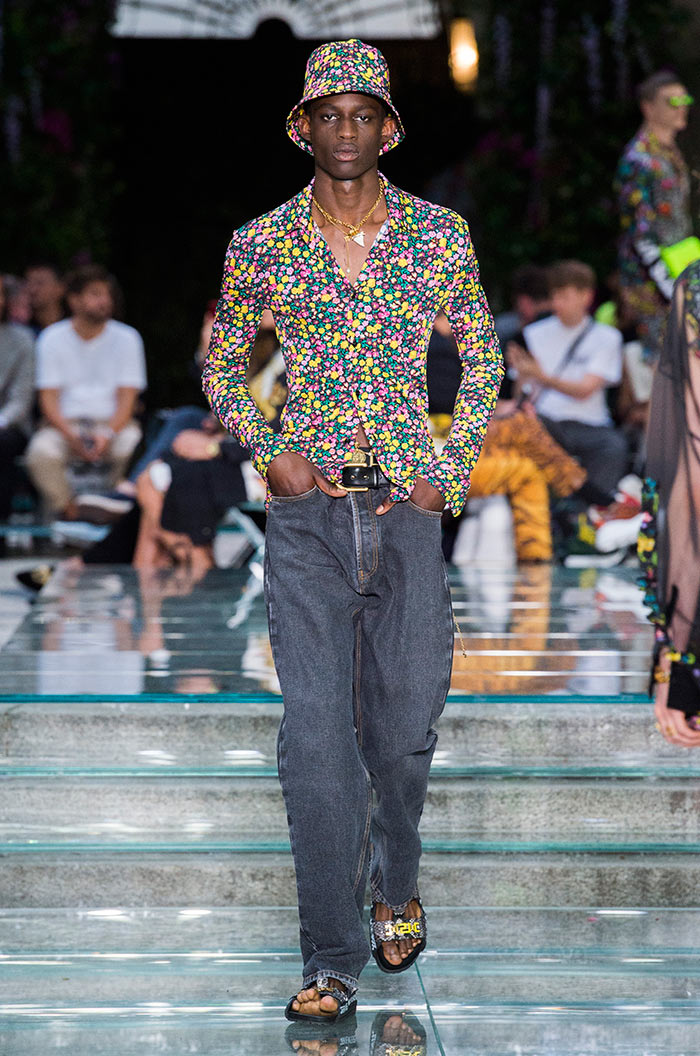
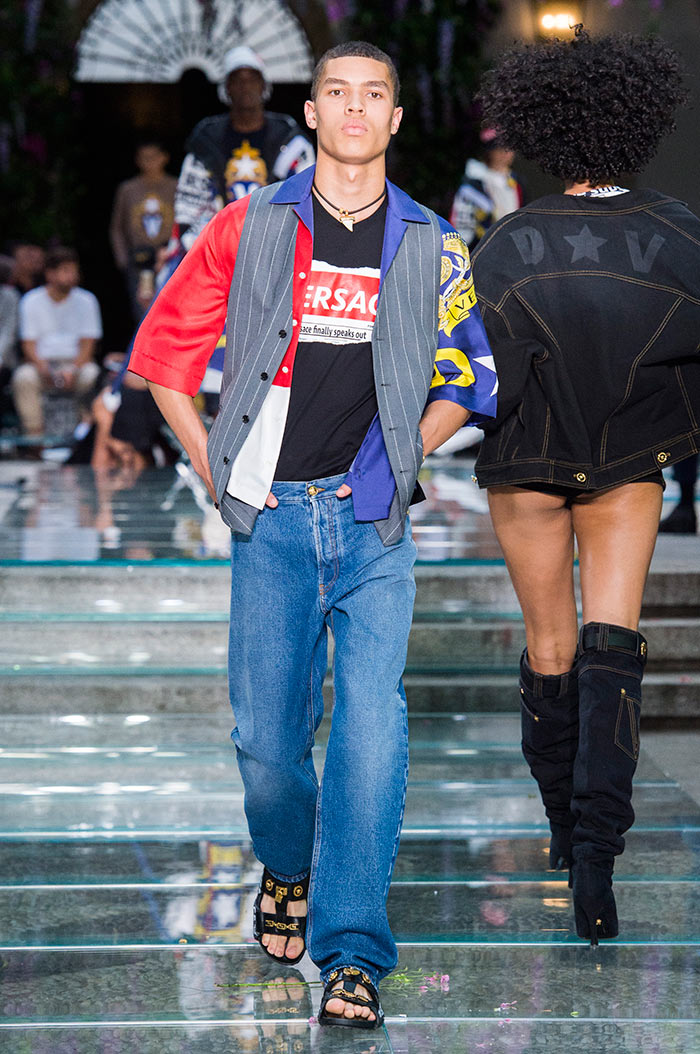
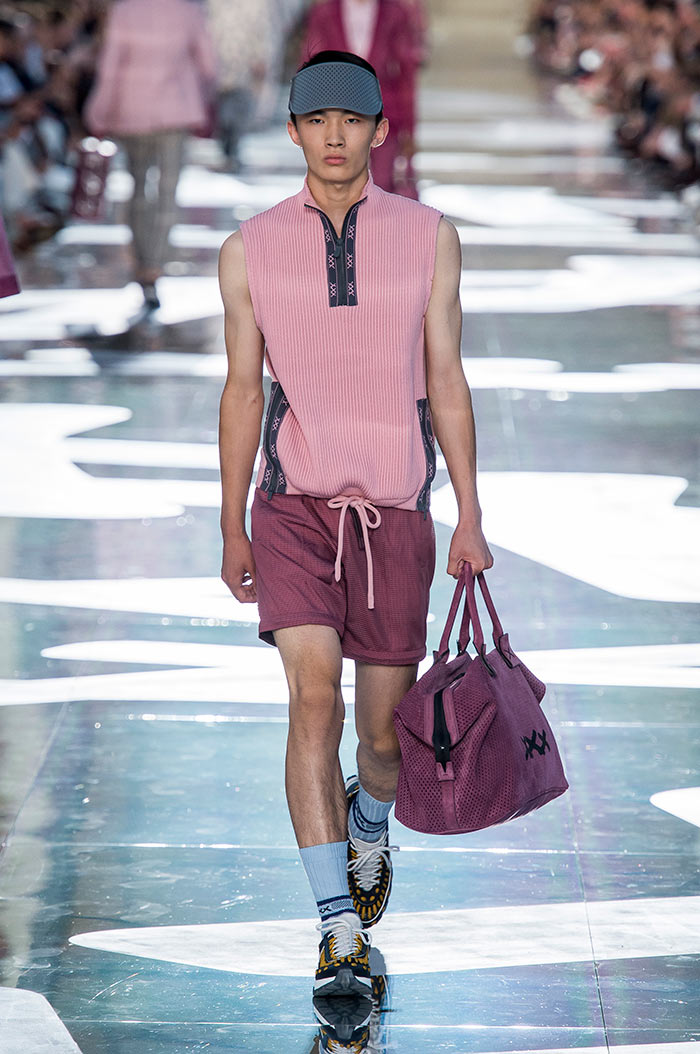
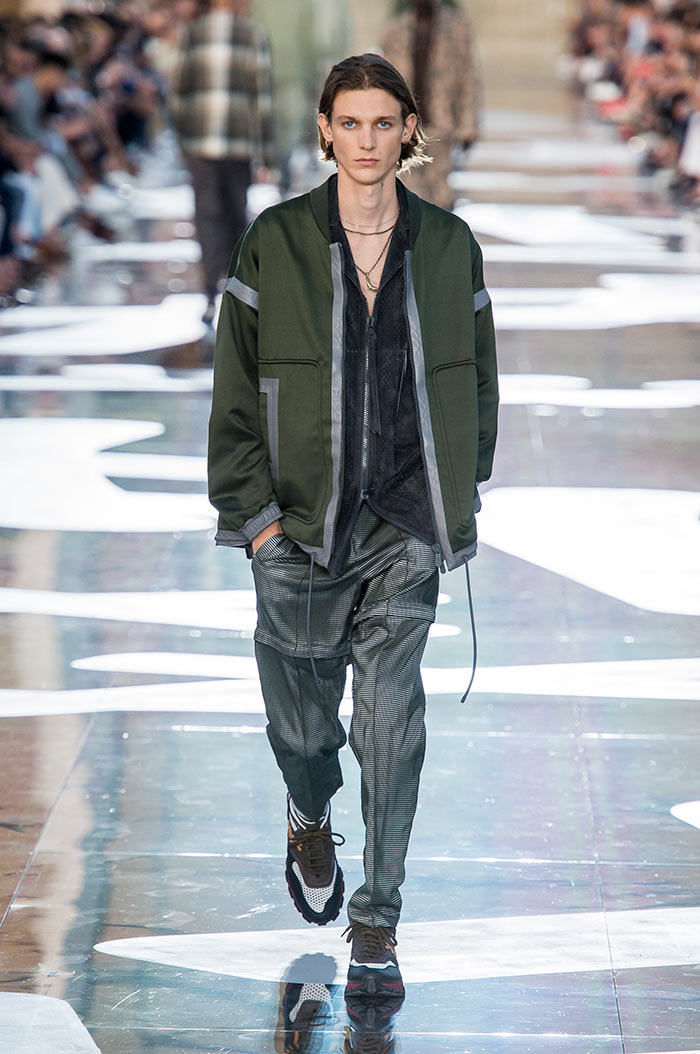
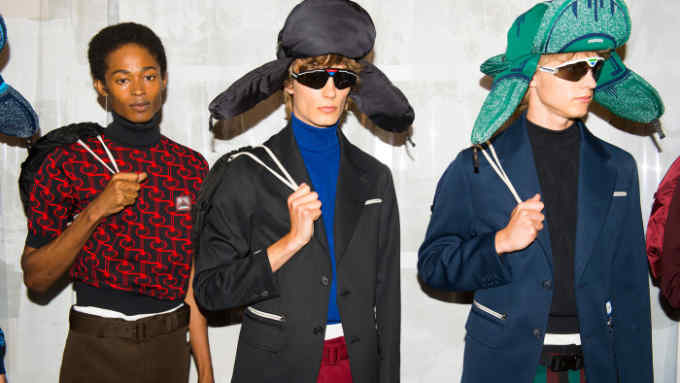
Comments